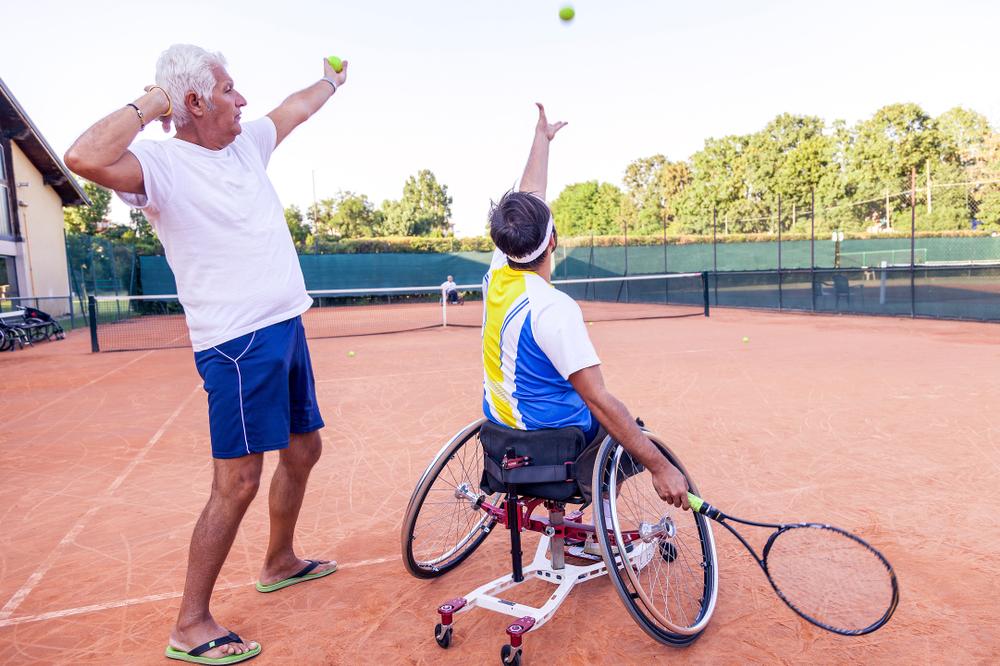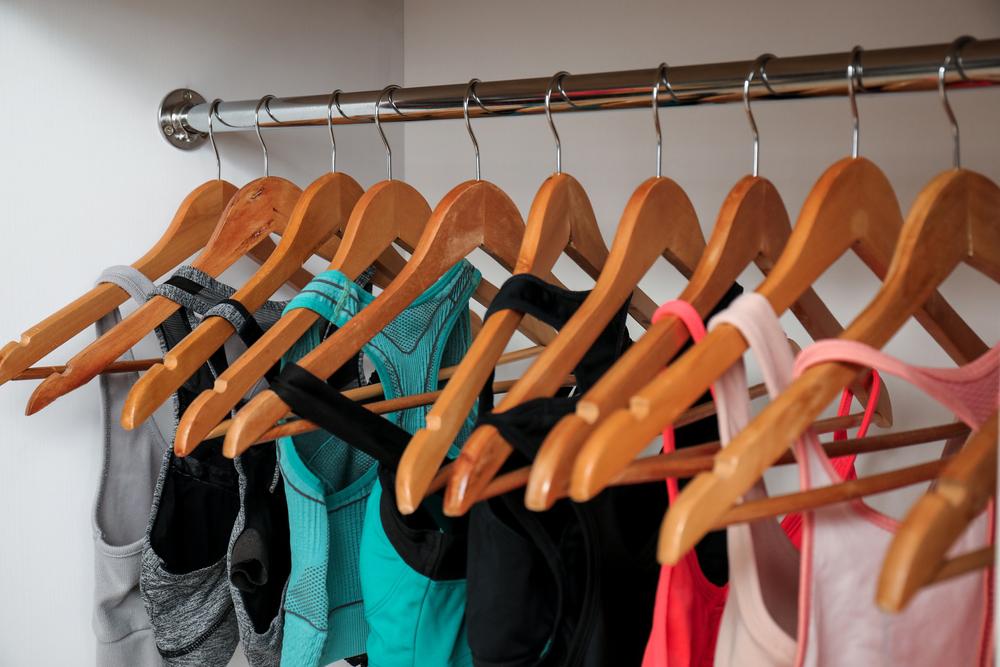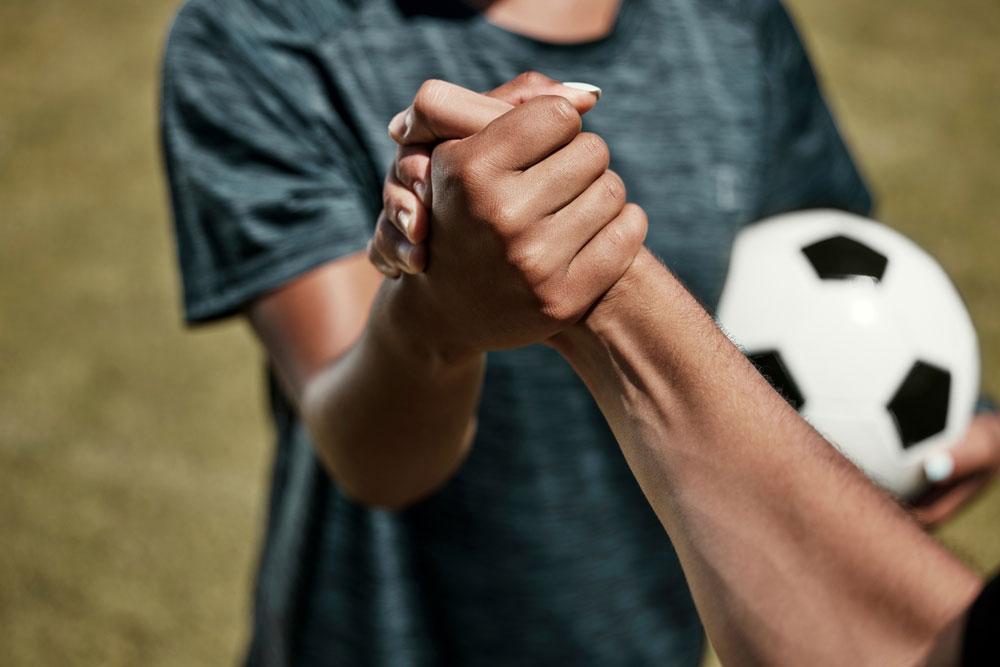 Young athletes face tough transitions on a regular basis. Whether it’s something big, like a move to a new school, or just the start of a season with a new coach, these transitions can be significant sources of anxiety. But you can help your young athlete navigate these challenging times.
Young athletes face tough transitions on a regular basis. Whether it’s something big, like a move to a new school, or just the start of a season with a new coach, these transitions can be significant sources of anxiety. But you can help your young athlete navigate these challenging times.
Here, TrueSport Expert Kevin Chapman, PhD, clinical psychologist and founder of The Kentucky Center for Anxiety and Related Disorders, shares six ways to help your athlete reduce their anxiety in times of transition. Remember, not every method will be the right fit for your child, so you may need to try a few exercises before landing on the one that helps your athlete the most.
1. Ride the wave
Chapman likes to tell all his athletes to “ride the wave” when it comes to feeling negative emotions like anxiety, frustration, and fear. “I encourage athletes to feel their emotions, rather than avoiding them or ignoring them,” he says. Don’t tell your athlete to ignore their feelings: acknowledge them instead. “I like the metaphor of riding the wave because emotions truly do come in waves, and they will flow and ebb,” he adds. “Distress is uncomfortable, but it’s also tolerable and impermanent. Feel that feeling, and know that when you ride the wave, it always comes down again.”
2. Consider the worst-case scenario
 It may sound counterintuitive, but leaning into an athlete’s greatest fear can actually help them work through it. Often, a young athlete will catastrophize—assume the worst—without fully thinking a scenario through. They have a feeling of heightened fear or anxiety but aren’t necessarily picturing a specific outcome. “Unnecessary anxiety or heightened anxiety is typically the result of getting caught in thinking traps. And one of the thinking traps involved in transition anxiety for an athlete would be what we call catastrophizing,” says Chapman.
It may sound counterintuitive, but leaning into an athlete’s greatest fear can actually help them work through it. Often, a young athlete will catastrophize—assume the worst—without fully thinking a scenario through. They have a feeling of heightened fear or anxiety but aren’t necessarily picturing a specific outcome. “Unnecessary anxiety or heightened anxiety is typically the result of getting caught in thinking traps. And one of the thinking traps involved in transition anxiety for an athlete would be what we call catastrophizing,” says Chapman.
He suggests asking your child to write or talk out the worst-case scenario. What is the worst possible thing that could happen on that first day of school or practice? Then, ask them to think through how they could potentially handle that worst case scenario, or cope with it. Often, just vocalizing the worst case is enough to help your athlete see that it’s not as bad as they think. Running through solutions and coping strategies helps decrease anxiety as well.
3. Visualize
Whether it’s taking five minutes with their eyes closed or writing it out in a journal, encourage your child to think about how they want the day (or practice, or game) to play out. Encourage them to get as detailed and granular as possible, not just thinking about sinking shots at practice, but about getting to the locker room on time after the bell rings, getting changed, warming up, and all the mundane details that go into a normal day. This may help your athlete realize that they’ve done all these steps before, even if some of the parts—like where the locker room is at the new school—may be different.
“Visualization is a powerful tool to actually change the brain using neuroplasticity, and can become a self-fulfilling prophecy in a positive way for your athlete—just make sure they’re thinking through a realistic day, not the perfect day,” says Chapman. “If they can visualize how they’ll handle a missed shot in practice versus imagining making every shot, that’s better.” One trap to avoid though, Chapman notes, is falling into a perfectionist mindset. If you know your athlete has perfectionist tendencies, visualizing the ideal day could backfire, because if something happens to slightly derail that plan, your athlete may struggle to get back on track.
4. Create a list of easy to accomplish goals
 For bigger transitions like starting at a new school, it can be helpful to set some achievable behavioral goals. Help your athlete list a few goals that may be a bit anxiety-producing, but that are small enough to get some easy, early wins. This could mean emailing the baseball coach at the new school to ask about team tryouts. These small goals add up to big gains over time, says Chapman. “These small behavioral goals are really the key to mastery because they decrease anxiety and increase confidence, or what we call self-efficacy, as it relates to that specific task, like getting started on a new team.”
For bigger transitions like starting at a new school, it can be helpful to set some achievable behavioral goals. Help your athlete list a few goals that may be a bit anxiety-producing, but that are small enough to get some easy, early wins. This could mean emailing the baseball coach at the new school to ask about team tryouts. These small goals add up to big gains over time, says Chapman. “These small behavioral goals are really the key to mastery because they decrease anxiety and increase confidence, or what we call self-efficacy, as it relates to that specific task, like getting started on a new team.”
5. Develop some physical grounding practices
Chapman doesn’t like the idea of deep breathing for the sake of deep breathing—many people misuse the concept of meditative breathing as a way to tamp down anxiety, rather than feeling it and moving through the emotion (‘riding the wave’). “Understand that breathing is simply a portable tool to help you remain in or deal with uncomfortable or anxiety-provoking situations,” he says. “Deep breathing won’t help if you’re still thinking catastrophically.”
In reality, the deep breathing isn’t the cure for anxiety, Chapman says. But it is a tool that allows an athlete to move into that space to confront that anxiety. If you can teach your athlete to take those few deep breaths, acknowledge the feelings of anxiety going through their mind in the moment, and use that breath to physically deal with the sensations of discomfort, your athlete will be better prepared to walk into that first team meeting feeling more confident and capable.
6. Ask for help
 Make sure that your athlete knows that seeking expert help, whether it’s from a coach, teacher, counselor, psychologist, or parent is a strong thing to do—not a sign of weakness. Pay attention to your athlete’s feelings as they deal with this transition. “There are two signs I look for that would suggest an athlete needs professional help,” Chapman says. “First, if symptoms of anxiety are distressing and happening on a daily basis. And second, if those feelings are impairing functioning, meaning some facet of your athlete’s life, from sport to school to family relationships.” If you or your athlete feels as though the level of anxiety goes beyond normal first day jitters, speak to an expert early, rather than waiting for the situation to potentially worsen.
Make sure that your athlete knows that seeking expert help, whether it’s from a coach, teacher, counselor, psychologist, or parent is a strong thing to do—not a sign of weakness. Pay attention to your athlete’s feelings as they deal with this transition. “There are two signs I look for that would suggest an athlete needs professional help,” Chapman says. “First, if symptoms of anxiety are distressing and happening on a daily basis. And second, if those feelings are impairing functioning, meaning some facet of your athlete’s life, from sport to school to family relationships.” If you or your athlete feels as though the level of anxiety goes beyond normal first day jitters, speak to an expert early, rather than waiting for the situation to potentially worsen.
_______________________
Takeaway
Tackling a transition, like joining a new team or starting at a new school, is often a stressful and anxious time for a young athlete. These strategies will help you better understand and support your athlete during this difficult time.



